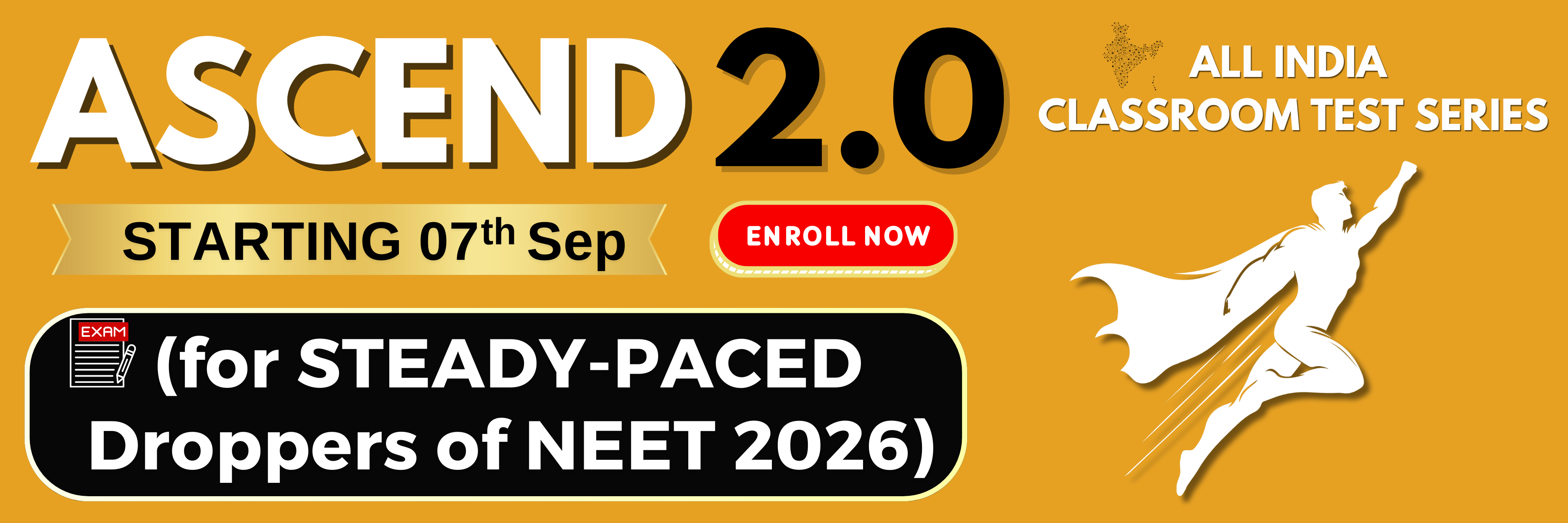Select Question Set:
Amphibians are not characterised by the presence of:
1. Dry skin, with placoid scales
2. Eyelids
3. A tympanum
4. Three-chambered heart
Subtopic: Study of Amphibians |
77%
Level 2: 60%+
Please attempt this question first.
Hints
Please attempt this question first.
Crocodiles:
| I: | have a four chambered heart. |
| II: | are endotherms. |
| 1. | Only I is correct |
| 2. | Only II is correct |
| 3. | Both I and II are correct |
| 4. | Both I and II are incorrect |
Subtopic: Study of Reptilia |
69%
Level 2: 60%+
Please attempt this question first.
Hints
Please attempt this question first.
Ornithorhynchus is:
1. a flightless bird
2. a limbless amphibian
3. an egg laying mammal
4. an extinct reptile that was direct ancestor of mammals
1. a flightless bird
2. a limbless amphibian
3. an egg laying mammal
4. an extinct reptile that was direct ancestor of mammals
Subtopic: Study of Aves & Mammals |
77%
Level 2: 60%+
Please attempt this question first.
Hints
Please attempt this question first.
What structure in molluscs forms the shell and houses the gills?
1. mantle
2. epidermis
3. gastrovascular cavity
4. odontophore
1. mantle
2. epidermis
3. gastrovascular cavity
4. odontophore
Subtopic: Phylum Mollusca |
94%
Level 1: 80%+
Please attempt this question first.
Hints
Please attempt this question first.
| Assertion(A): | Cnidarians and Echinoderms are diploblastic animals. |
| Reason(R): | Cnidarians and Echinoderms lack mesoderm. |
| 1. | Both (A) and (R) are True and (R) is the correct explanation of (A). |
| 2. | Both (A) and (R) are True but (R) is not the correct explanation of (A). |
| 3. | (A) is True but (R) is False. |
| 4. | (A) is False and (R) is False. |
Subtopic: Phylum Coelenterata | Phylum Echinodermata |
76%
Level 2: 60%+
Please attempt this question first.
Hints
Please attempt this question first.
| Assertion(A): | The physiology of tapeworms is highly simplified. |
| Reason(R): | The reproductive potential of tapeworms is very high. |
| 1. | Both (A) and (R) are True and (R) is the correct explanation of (A). |
| 2. | Both (A) and (R) are True but (R) is not the correct explanation of (A). |
| 3. | (A) is True but (R) is False. |
| 4. | (A) is False and (R) is True. |
Subtopic: Phylum Platyhelminthes |
62%
Level 2: 60%+
Please attempt this question first.
Hints
In Echinoderms:
| Statement I: | Digestive system is complete with mouth on the lower (ventral) side and anus on the upper (dorsal) side. |
| Statement II: | An excretory system is absent. |
| 1. | Statement I is correct; Statement II is incorrect |
| 2. | Statement I is correct; Statement II is correct |
| 3. | Statement I is incorrect; Statement II is incorrect |
| 4. | Statement I is incorrect; Statement II is correct |
Subtopic: Phylum Echinodermata |
82%
Level 1: 80%+
Please attempt this question first.
Hints
Please attempt this question first.
Regarding Osteichthyes:
| Statement I: | They have four pairs of gills which are covered by an operculum on each side. |
| Statement II: | Air bladder is absent. |
| 1. | Statement I is correct; Statement II is incorrect |
| 2. | Statement I is correct; Statement II is correct |
| 3. | Statement I is incorrect; Statement II is incorrect |
| 4. | Statement I is incorrect; Statement II is correct |
Subtopic: Comparative study of Cartilagenous & Bony Fishes | Class Osteichthyes |
81%
Level 1: 80%+
Please attempt this question first.
Hints
Please attempt this question first.
Which collared flagellated cells are characteristically found in sponges?
1. Choanocytes
2. Interstitial cells
3. Gastrodermal cells
4. Nematocytes
1. Choanocytes
2. Interstitial cells
3. Gastrodermal cells
4. Nematocytes
Subtopic: Phylum Porifera |
95%
Level 1: 80%+
Please attempt this question first.
Hints
Please attempt this question first.
A non-glandular skin will be seen in both:
| 1. | Snake and Frog | 2. | Chameleon and Turtle |
| 3. | Frog and Pigeon | 4. | Crocodile and Tiger |
Subtopic: Study of Reptilia |
65%
Level 2: 60%+
Please attempt this question first.
Hints
Select Question Set:






